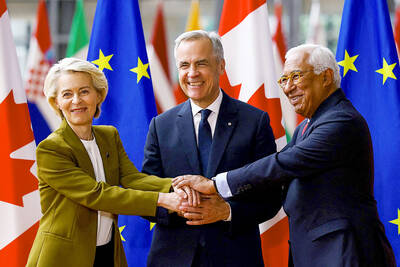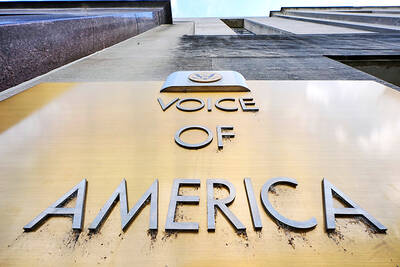A cathedral made from cardboard — the idea might sound flimsy, particularly given that cathedrals tend to be known for their solid presence: the flying buttresses, the soaring domes, the Gothic grandeur. However, in the earthquake-devastated city of Christchurch, New Zealand, Anglican leaders believe it will deliver both a temporary solution and a statement about the city’s recovery.
Yesterday, they announced plans to build a 25m high cathedral constructed with 104 tubes of cardboard. The structure will be a temporary replacement for the iconic stone ChristChurch Cathedral, which was ruined last year in an earthquake that killed 185 people and destroyed much of the downtown.
The Reverend Craig Dixon, a church spokesman, said the temporary cathedral would seat 700 people, cost up to NZ$5 million (US$4.1 million) and would be used for 10 years while a permanent -replacement is designed and built.
The Japanese architect, Shigeru Ban, has used cardboard as a material for other temporary buildings, including a “paper church” that was used as a community center after the 1995 Kobe earthquake in Japan.
Dixon said he hopes construction can begin within about six weeks and be completed by the end of the year.
“I think this building has the potential to become an icon in its own right,” he said. “I think it will be greatly loved for a long time.”
Dixon said the structure would be weatherproof and fire-resistant. He said the plan is to use traditional materials like concrete, steel and wood to provide structural support to the A-frame-style cathedral and an attached annex. Up to two dozen shipping containers inside would provide space for offices, a kitchen and storage, he added, while the roof would be made of an opaque polycarbonate material.
Richard Gray, the chairman of a church group that has been driving the project, said the cathedral would make a statement that Christchurch is moving forward, and that people are finding solutions that are not only innovative, but also environmentally friendly — after all, he says, the cathedral would be recyclable.
Anglican leaders in Christchurch have chosen a site in Latimer Square, about 300m from the ruins of the current cathedral and near where 115 people died when the Canterbury Television (CTV) building collapsed.
“It’s very symbolic that it’s across the road from the CTV building. It’s very poignant,” Gray said.
Anglican leaders have yet to submit their final plans to city officials, who would need to approve them before construction could begin. City officials did not respond to requests for comment yesterday, although Gray said he was confident the church has done its due diligence and the project would be approved.

Drug lord Jose Adolfo Macias Villamar, alias “Fito,” was Ecuador’s most-wanted fugitive before his arrest on Wednesday, more than a year after he escaped prison from where he commanded the country’s leading criminal gang. The former taxi driver turned crime boss became the prime target of law enforcement early last year after escaping from a prison in the southwestern port of Guayaquil. Ecuadoran President Daniel Noboa’s government released “wanted” posters with images of his face and offered US$1 million for information leading to his capture. In a country plagued by crime, members of Fito’s gang, Los Choneros, have responded with violence, using car

Canada and the EU on Monday signed a defense and security pact as the transatlantic partners seek to better confront Russia, with worries over Washington’s reliability under US President Donald Trump. The deal was announced after a summit in Brussels between Canadian Prime Minister Mark Carney and European Commission President Ursula von der Leyen and European Council President Antonio Costa. “While NATO remains the cornerstone of our collective defense, this partnership will allow us to strengthen our preparedness ... to invest more and to invest smarter,” Costa told a news conference. “It opens new opportunities for companies on both sides of the

The team behind the long-awaited Vera Rubin Observatory in Chile yesterday published their first images, revealing breathtaking views of star-forming regions as well as distant galaxies. More than two decades in the making, the giant US-funded telescope sits perched at the summit of Cerro Pachon in central Chile, where dark skies and dry air provide ideal conditions for observing the cosmos. One of the debut images is a composite of 678 exposures taken over just seven hours, capturing the Trifid Nebula and the Lagoon Nebula — both several thousand light-years from Earth — glowing in vivid pinks against orange-red backdrops. The new image

OVERHAUL: The move would likely mark the end to Voice of America, which was founded in 1942 to counter Nazi propaganda and operated in nearly 50 languages The parent agency of Voice of America (VOA) on Friday said it had issued termination notices to more than 639 more staff, completing an 85 percent decrease in personnel since March and effectively spelling the end of a broadcasting network founded to counter Nazi propaganda. US Agency for Global Media (USAGM) senior advisor Kari Lake said the staff reduction meant 1,400 positions had been eliminated as part of US President Donald Trump’s agenda to cut staffing at the agency to a statutory minimum. “Reduction in Force Termination Notices were sent to 639 employees at USAGM and Voice of America, part of a